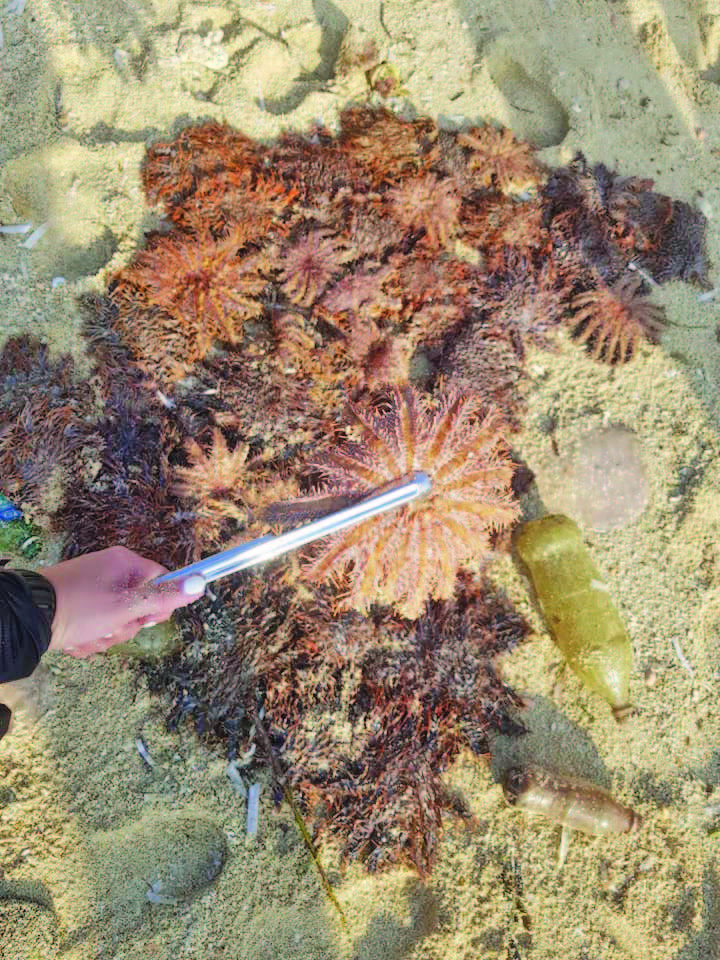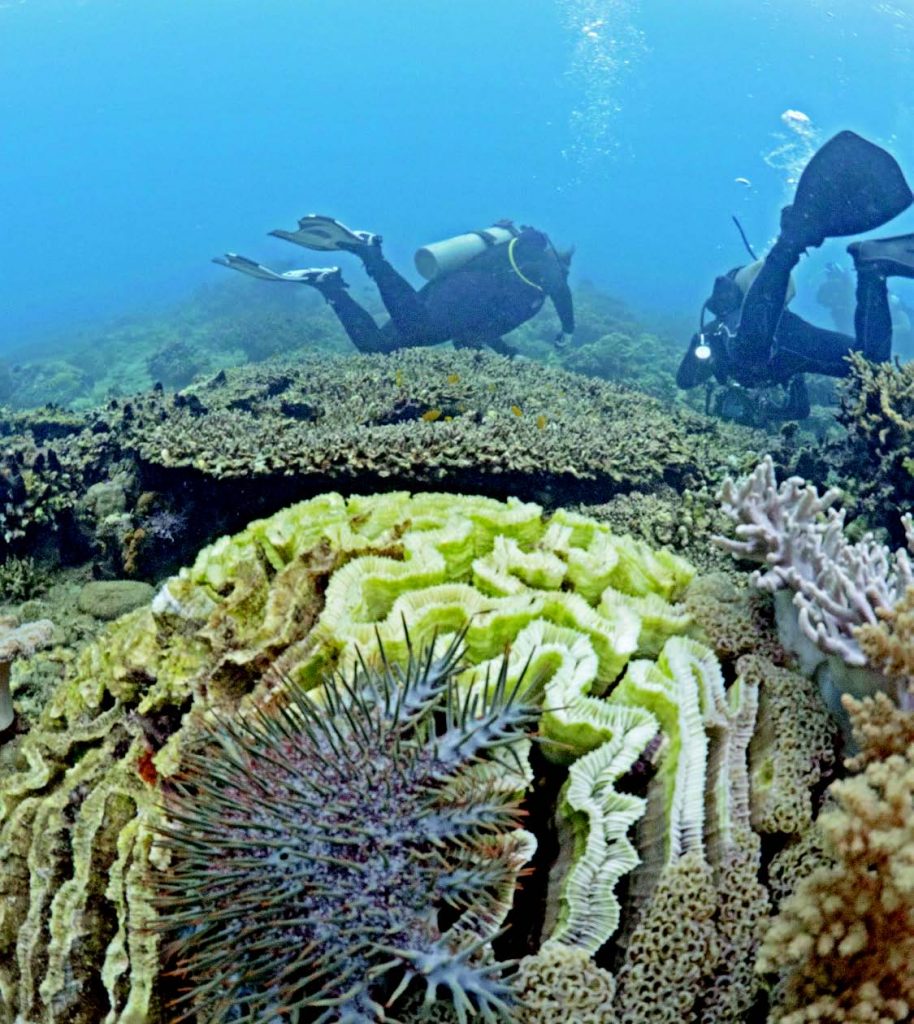Arriving at a beautiful cove nestled in Sipalay, Negros Occidental, my team and I were excited to explore the marine sanctuaries in the area. We have heard a lot about the amazing dive sites; though it was not one of the more popular tourist destinations, I could agree that it was definitely a diamond in the rough.
Our first dive site was Sanken Island. We were excited as we put on our gear but as soon as we hit the water, I recognized a nemesis I knew very well: the deadly Crown-of-Thorns. It was a starfish that fed on coral polyps and they could consume around 13 square meters of coral reef per year.

It worsened as we moved southwest. We observed that the starfish population increased from one to four per square meter. We knew there was an outbreak that needed to be addressed.
We alerted the stakeholders involved, including resorts, local government units, and the community, which led to a massive cleanup. We did three to four dives a day to collect the dreaded threat that our coral reefs faced. After days in and out of the water, we asked ourselves, how did it become this bad?
The answer was plain and simple: overfishing.
How overfishing is killing the corals
The-Crown of-Thorns are normally put in check by several creatures: Triton Shell (usually taken from the reefs to make popular souvenirs), Bump Head Parrotfish, Puffer Fish, and Triggerfish, all of which are sold to different markets. They are so overfished to the point that they could no longer play their part in keeping starfish populations in check, creating outbreaks that could wipe out entire reefs for good.

Our coral reefs – including one of the most popular in the world, the Tubbataha Reef, which is located in the heart of the Sulu Sea, are already in critical condition. A nationwide assessment of the Philippine coral reefs was done in 2014 by Dr. Al Licuanan, revealing that the country lost a third of its corals in just 20 years. The survey also concluded that 90% of our reefs are already in poor condition and at this state will not survive a massive outbreak of Crown-of-Thorns or a major bleaching, which is also a serious threat to our reefs.
These are rather alarming, yet are often overlooked by the general public. As we go on with our everyday lives, we don’t realize that our country is already losing entire ecosystems, because these facts aren’t commonly covered in the news.

The Crown-of-Thorns outbreak was definitely cause for alarm. As soon as we wrapped up in Sipalay and reported the incident via Reef Check Philippines, countless reports started rolling in about how other communities observed similar phenomena in their areas. There were reports from Iloilo, Anilao, and Puerto Galera.
Such a disaster was easy to avoid. With proper enforcement of the rules in Marine Protected Areas and of fishing regulations, we wouldn’t be seeing this much of a threat today.
It really inspires me that despite this serious outbreak, more and more people are coming together. Everyday, we see advocates speaking up for the reefs and its animals, especially because they do not have a voice of their own. I hope that one day, we can finally win against man’s greed so that our future generations can still enjoy the beauty that lies in the Philippines Seas.
So, who’s the real pest?
Man’s appetite for seafood has caused problems in our oceans, including plastic pollution (most of which is caused by ghost fishing equipment), extinction of marine species, and biological imbalances in the ecosystem.

The overpopulation of Crown-of-Thorns is one such proof of ecological imbalance caused by human activity.
This appeared in Animal Scene magazine’s September 2019 issue.
Related stories:
– Red sea corals under threat from Egypt’s rebounding tourism
– Warming oceans kill dolphins, corals, and other marine animals
– Atlantic corals: Colorful and vulnerable






